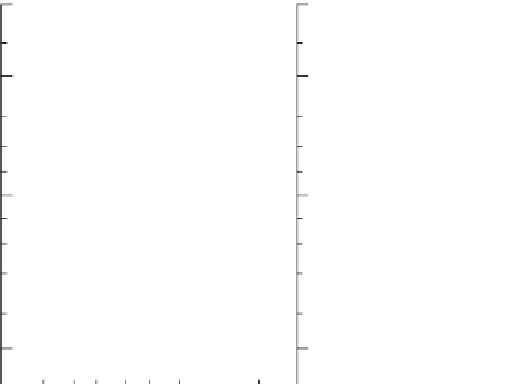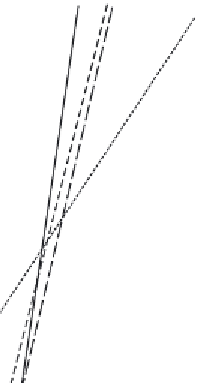Biology Reference
In-Depth Information
Later studies of primaquine demonstrated essentially similar indepen-
dence of dosing schedule from efficacy.
Cooper et al. (1953)
treated Chesson-
challenged volunteers with 7- or 14-days of daily primaquine, but nearly
all subjects relapsed. Subsequent work (
Jones et al., 1953
;
Di Lorenzo et al.,
1953
) effectively repeated that experiment in soldiers naturally infected in
Korea and demonstrated equal efficacy of the two regimens. After the dis-
covery of G6PDd as the basis of primaquine sensitivity,
Alving et al. (1960)
applied weekly dosing for 8 weeks to safely accommodate G6PDd patients
needing radical cure and demonstrated good efficacy against relapse. In the
1970s,
Clyde and McCarthy (1977)
reported good efficacy of 60 mg daily
for 7 days compared to 30 mg daily for 14 days.
Schmidt et al. (1977)
reported conclusive affirmation of the total dose effect using primaquine
and other 8-aminoquinolines (with chloroquine or quinine) in the
Plasmo-
dium cynomolgi
relapse model.
Figure 4.2
summarizes those findings. Across
total doses ranging from completely ineffective to effective for primaquine
and a methylated derivative, efficacy with a one, three, seven, or 14 doses
(daily doses) varied little. A study in Colombia, however, reported 15%
(A)
(B)
Primaquine
4-Methyl primaquine
100
95
90
80
70
60
50
40
30
20
Regimens
Single dose
Three dose
Seven dose
Fourteen dose
10
5
0
1.75
3.5
10.5
Total dose - mg base per kg body weight
7.0
0.875
1.75
3.5
7.0
Figure 4.2
The total dose effect of 8-aminoquinolines against relapse of
Plasmodium
cynomolgi
in rhesus macaques. (
Reprinted from Schmidt
(
Schmidt et al., 1977
)
with per-
mission of the American Journal of Tropical Medicine & Hygiene.
)










































